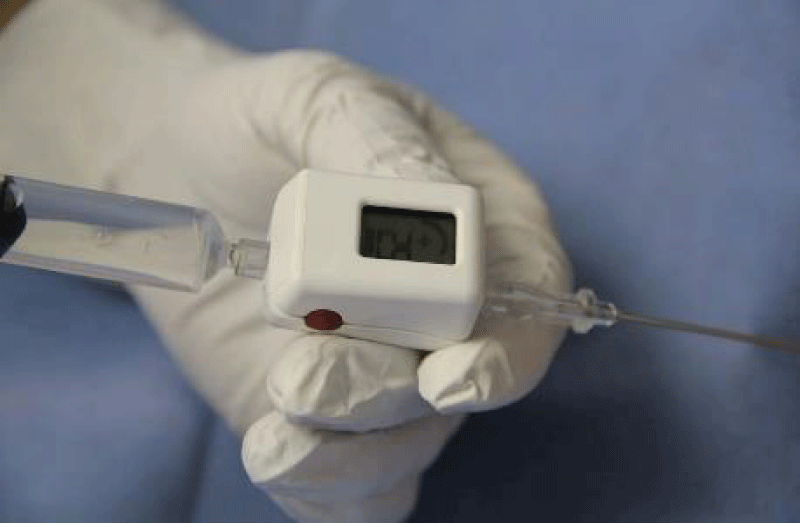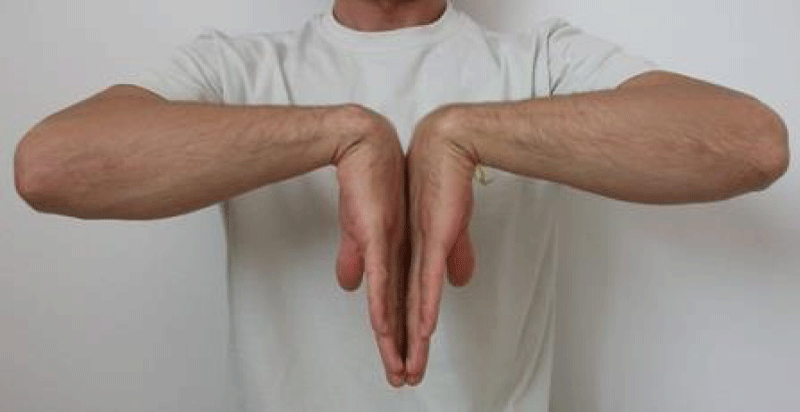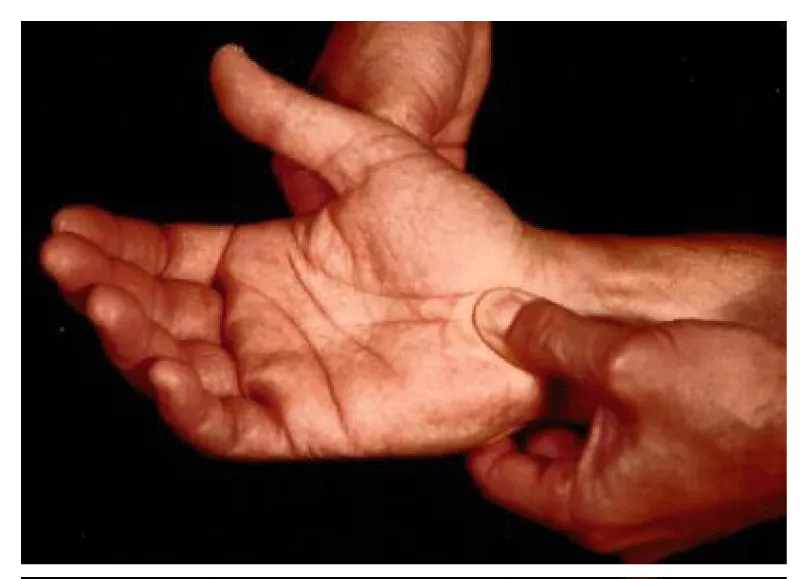Journal of Neurology, Neurological Science and Disorders
Intratunnel Pressure Measurement in Patients with Carpal Tunnel Syndrome in Vietnam
Dung Tran Trung1,3*, Manh Nguyen Huu1,3, Khanh Trinh Le1,3* and Thanh Ma Ngoc1,2
2Department of Orthopeadic and Neurosurgery, Hanoi Medical University Hospital, Vietnam
3Department of Orthopaedic Surgery, Saint Paul University Hospital, Ha Noi, Vietnam
Cite this as
Trung DT, Huu MN, Le KT, Ngoc TM (2017) Intratunnel Pressure Measurement in Patients with Carpal Tunnel Syndrome in Vietnam. Journal of Neurology, Neurological Science and Disorders 3(2): 053-055. DOI: 10.17352/jnnsd.0000022Objective: Measure the intratunnel pressure of carpal tunnel in patients who underwent surgical treatment for carpal tunnel syndrome in Hanoi Medical University Hospital
Patients and method: Prospective cross-sectional study of 33 carpal tunnel syndrome patients (61 hands) treated surgically at Hanoi Medical University Hospital. Measure the preoperative intratunnel pressure with manometer using needle catheter with 3 positions: neutral position, 90º of flexion and 90º of extension.
Results: the average intratunnel pressure was 13.87 ±1.56 mmHg, it increased when wrist at 90º of flexion and 90º of extension (27.60 ± 2.53 and 34.76 ± 3.25, respectively).
Conclusion: There is a high intratunnel pressure situation in the carpal tunnel syndrome.
Introduction
Carpal tunnel syndrome (CTS) was described by James Paget in the middle of 18s century [1]. This is the most common disorder of peripheral neuropathy. Approximately 3% of adult people in America suffered from CTS. This is one of most popular work-related silent injuries that make more than 2 million people have to come to clinical per year [1]. In Vietnam, the number of people who suffer from CTS is relatively high. Carpal tunnel syndrome is one of the causes of hand numbness, tingling, terrible feeling or even thenar atrophy. This disease usually happens in people over the age of 35, women are more commonly affected than men.
Seventy percent of CTS patients are of unknown cause, the others may be due to intrinsic and extrinsic factors. Intrinsic factors which exert pressure within the tunnel are pregnancy, hemodialysis, gout, diabetes and so on. Extrinsic factors which exert pressure outside the tunnel are lipomas, ganglion and vascular malformation which change the size of the carpal tunnel then increase the pressure [2,3]. Increasing pressure into median nerve results in pain, numbness, tingling or burning sensations in the thumb, index, middle and ring finger because they receive sensory and motor function from the median nerve or even worse maybe atrophy, decrease or lost hand function [1,4].
Carpal tunnel syndrome diagnosis usually based on clinical findings, electrophysiological testing and diagnostic imaging. Clinical findings are at the level of a medium of sensitivity and specificity, the electrophysiological testing result probably has false negative and positive [1,4,5]. Surgical treatment is just effective when median nerve injury at the location where it is pinched, but electrophysiology cannot evaluate exactly the location. Recently, ultrasonography has been a simple, cost-effective method to evaluate the median nerve for signs of compression to treat carpal tunnel syndrome.
As for pathology, most cases of carpal tunnel syndrome are unknown causes but the impact to median nerve due to increasing colloid osmotic pressure in the carpal tunnel the same mechanical with compartment syndrome [2,3]. In Vietnam, there are no researches which evaluate the intra-tunnel pressure, so we conducted this study for the purpose:
Measure the intra-tunnel pressure of patients with carpal tunnel syndrome who were assigned to surgery at Hanoi Medical University Hospital.
Material and Method
- Subject: 33 patients with CTS who were assigned to surgery at Hanoi Medical University Hospital
- Indications for surgery:
+ CTS with moderate or more severe symptoms and high clinical probability, thenar atrophy.
+ There is a positive electrophysiological test or compression seen on ultrasonography.
- Method: Prospective cross-sectional study
- Intra-tunnel pressure measurement method: We used the catheter with 1.2 mm of diameter, connected to Compass Compartment Pressure Transducer (Mirador Biomedical, Seattle, WA). We used a needle to insert to the carpal tunnel at the distal wrist crease just medial to the palmaris longus tendon. Take the needle out, leave the plastic cover, and connect it to the measuring machine. Check the system by the way of pressing the finger to wrist area and evaluate the change. Measure the pressure at 3 positions: neutral, 90º of extension and 90º of flexion (Figure 1).
- We processed data analysis using SPSS version 16.
- Ethics approval: All patients were fully explained and agreed to join in the research. The study had fully criteria in ethical medical approval and secured the individual information.
Results
There were 33 patients with 61 hands were diagnosed CTS and assigned to surgery. The average age was 45.6 (range 30-65). The average duration of symptoms appear until surgery was 10 months (3 – 26 months).
The carpal tunnel pressure with the wrist at neutral position, at 90º of flexion and at 90º of extension were 13.87 ± 1.56 mmHg, 27.60 ± 2.53 mmHg and 34.76 ± 3.25 mmHg, respectively. The average carpal tunnel pressure was highest at 90º of extension and lowest at neutral position (Table 1).
Comment: The carpal tunnel pressure in our study was similar to Rojviroj and lower than Gelberman.
Comment: There was a difference in results of control groups between two authors.
Discussion
The increased pressure in carpal tunnel is a pathogenic factor of carpal tunnel syndrome. The causes of the high pressure may be from outside or increased interstitial pressure in the carpal tunnel. This pressure leads to median nerve compression and causes changes in nerve transmission. Therefore, the assessment of neurotransmitter changes in neurological electrophysiology testing plays an important role in diagnosis and management of carpal tunnel syndrome [2,3]. Physical tests to diagnose carpal tunnel syndrome are based on the principles of increasing intra-tunnel pressure to detect neurological symptoms such as Phalen’s test, Durkan’s test [1].
Intra-tunnel pressure measurement was mentioned a long time ago. However, the measurement was not easy to do because the pressure was too low and we need a high exact device. In 1959, Tanzer [4] introduced a method of measuring pressure using Mercury Vapor Pressure meter and defining the pressure value with two positions of wrist: 90º of extension and 90º of flexion. Our research shown that the pressure was highest at 90º of extension. Brain, Wright and Wilkinson’s with a study on the dead body also had a similar conclusion. In their study, Brain, Wright and Wilkinson [6] as well as Rojviroj used a control group and found that, the intratunnel pressure varied with the wrist position, it increased in extension and flexion, and reach to the lowest point at neutral position (Figure 2).
This also explains the mechanism of Phalen’s maneuver (90º of flexion) or reverse Phalen’s maneuver (90º of extension). In this position, the carpal tunnel pressure increases, if symptoms appear demonstrating median nerve pinched [1]. A similar test also is used to evaluate based on increasing pressure in carpal tunnel in neutral position (Durkan’s test) (Figure 3).
Our research shown that the value of carpal tunnel pressure at neutral position was 13.87 ±1.56 mmHg, and it increased when wrist was at 90º of flexion and 90º of extension (27.60 ± 2.53 mmHg and 34.76 ± 3.25 mmHg, respectively). The carpal tunnel pressure in our study was similar to Rojviroj’s [6] and lower than Gelberman’s [7]. The value of carpal tunnel pressure in Gelberman’s study was very high, 32 mmHg at neutral position, 94 mmHg at 90º of flexion and 110 mmHg at 90º of extension (Table 2), much higher than our research as well as Rojviroj. There was a significant difference between two authors at 90º of flexion and 90º of extension. According to Rojviroj [8], the difference may be due to the using of a different catheter. This conclusion is may be true because the result of two authors is quite a difference (Table 3).
Conclusion
We conducted a study on 33 patients with carpal tunnel syndrome who assigned to surgery at Hanoi Medical University Hospital comprehend that the average intra-tunnel pressure was 13.87 ±1.56 mmHg at neutral position wrist, 27.60 ± 2.53 mmHg at 90º of flexion and 34.76 ± 3.25 mmHg at 90º of extension.
- Phalen GS (1972) the carpal tunnel syndrome: clinical evaluation of 598 hands. Clin Orthop 83: 29–40. Link: https://goo.gl/gvsqjb
- Luchetti R (2007) the Pathophysiology of Median Nerve Compression. Carpal tunnel syndrome Springer. Link: https://goo.gl/qxTxH8
- Kerwin G, Williams CS, Seiler JG (1996) the pathophysiology of carpal tunnel syndrome. Hand Clin 12:243-251. Link: https://goo.gl/s3HzaM
- Tanzer RC (1959) the carpal tunnel syndrome: a clinical and anatomical study. J bone Joint Surg (Am) 41: 626–634. Link: https://goo.gl/2B6Qqw
- Micael SC, Hae WS, Leah VP, Francis OW (2009) Ultrasonographic reference values for assessing the normal median nerve in adults. Journal of neuroimaging: official journal of the American Society of Neuroimaging 19: 47-51. Link: https://goo.gl/RaH2b4
- Brain WR, Wright AD, Wilkinson M (1947) Spontaneous compression of both median nerves in the carpal tunnel: six cases treated surgically. Lancet 277–282. Link: https://goo.gl/2vd7aV
- Gelberman RH, Hergenroeder PT, Hargens AR, Lundbord GN, Akeson WH (1981) The carpal tunnel syndrome: a study of carpal tunnel pressure. J Bone Joint Surg (Am) 68: 735–737. Link: https://goo.gl/YYuGVz
- Rojviroj S, Sirichativapee W, Kowsuwon W, Wongwiwattananon J, Tamnanthong N, et al (1990), Pressures in the carpal tunnel: a comparision between patients with carpal tunnel syndrome and normal subjects. J Bone Joint Surg (Br) 72: 516–518. Link: https://goo.gl/UL6GqM
- Seradge H (1995) In vivo measurement of carpal tunnel pressure in the functioning hand. J Hand Surg Am 20: 855-859. Link: https://goo.gl/FwQ7LU
- Seong Yeol Ahn (2009) Pressure Measurement in Carpal Tunnel Syndrome: Correlation with Electrodiagnostic and Ultrasonographic Findings. J Korean Neurosurg Soc 46: 199–204. Link: https://goo.gl/ayB7qK
Article Alerts
Subscribe to our articles alerts and stay tuned.
 This work is licensed under a Creative Commons Attribution 4.0 International License.
This work is licensed under a Creative Commons Attribution 4.0 International License.




 Save to Mendeley
Save to Mendeley
